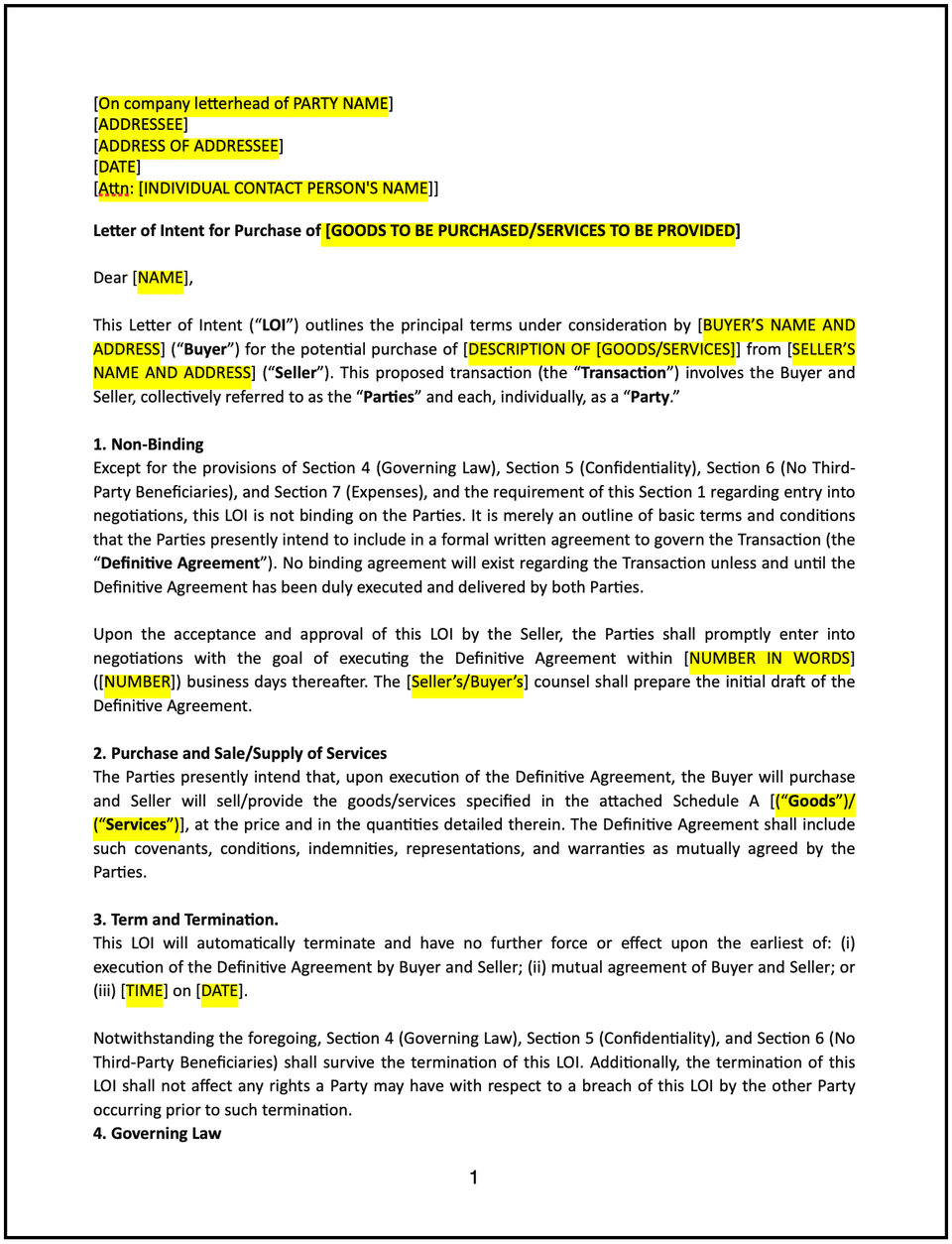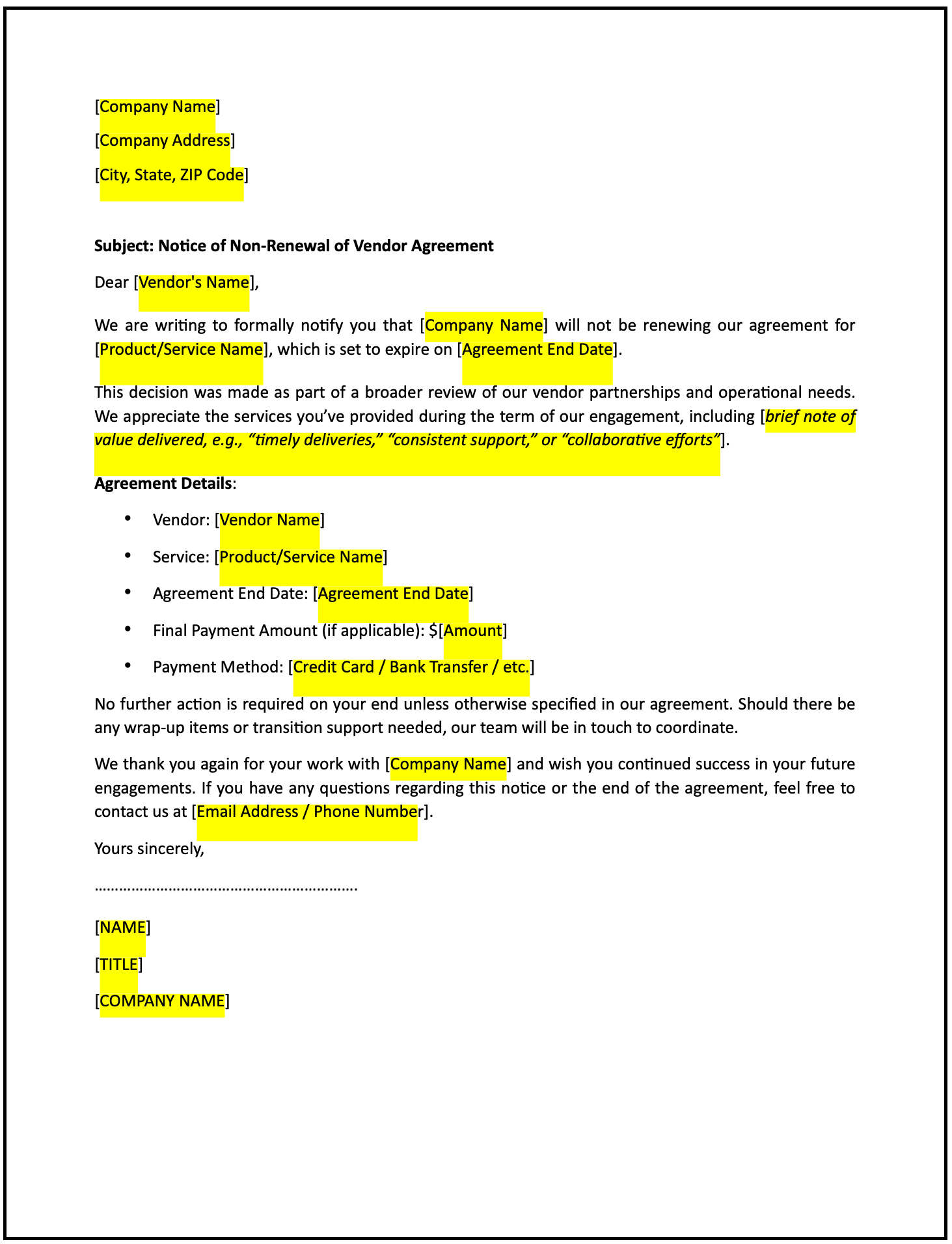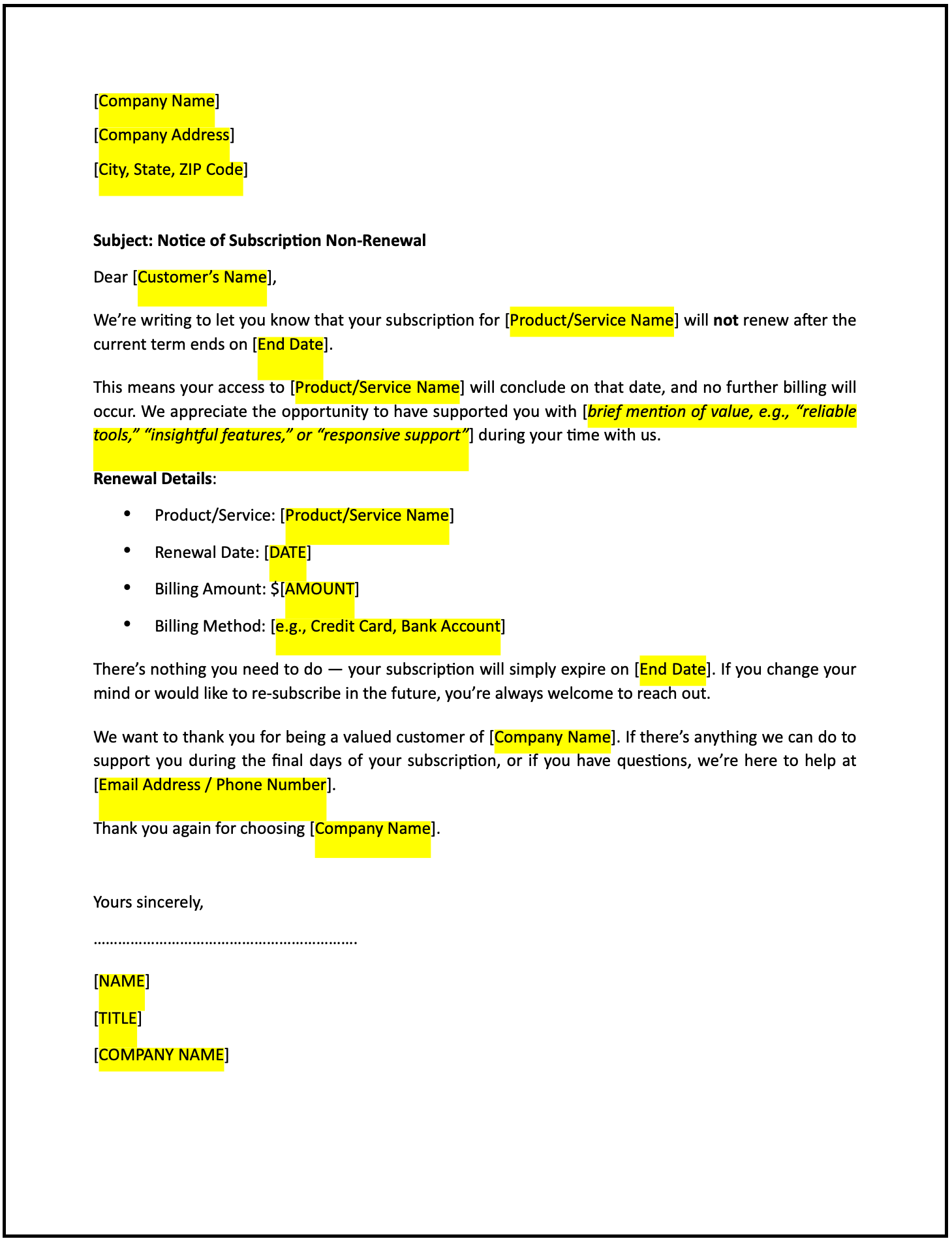Letter of intent to enter a business agreement: Free template

Letter of intent to enter a business agreement
A letter of intent (LOI) to enter a business agreement sets the stage for formal negotiations and outlines the key terms and intentions of the parties involved. This letter provides a professional way to express your interest, define preliminary terms, and establish a framework for moving forward while maintaining flexibility.
How to use this letter of intent to enter a business agreement
- Identify the parties: Clearly state the names and roles of all parties involved in the potential agreement to avoid ambiguity.
- Customize the template: Replace placeholders with your organization’s details, the purpose of the agreement, and the key terms or conditions being considered.
- Specify the intent: Clearly outline the intentions of both parties, including the general nature of the business relationship or transaction.
- Include preliminary terms: If applicable, summarize any agreed-upon terms, such as timelines, responsibilities, or key deliverables, while noting that these are subject to formal agreement.
- Maintain a professional tone: Ensure the letter reflects respect, collaboration, and a shared commitment to moving forward.
- Include a call to action: Propose the next steps, such as scheduling a meeting, drafting a formal agreement, or conducting further due diligence.
Benefits of using a letter of intent to enter a business agreement
This letter template provides a structured and professional way to initiate a business agreement while maintaining clarity and flexibility. Here’s how it helps:
- Establishes mutual understanding: The letter outlines the intentions and preliminary terms, ensuring all parties are aligned before formal negotiations.
- Provides clarity: Clearly stating key terms and objectives reduces ambiguity and sets the foundation for a successful agreement.
- Demonstrates professionalism: A formal LOI reflects respect for the other party and a commitment to constructive engagement.
- Maintains flexibility: By noting that terms are preliminary, the letter allows room for adjustments during formal negotiations.
- Facilitates next steps: Including a call to action ensures the process moves forward efficiently and collaboratively.
Tips for writing an effective letter of intent to enter a business agreement
- Be specific: Clearly identify the parties, the purpose of the agreement, and any key preliminary terms being proposed.
- Use professional language: Maintain a respectful and collaborative tone to foster a positive working relationship.
- Clarify intent: Clearly state that the letter is non-binding, if applicable, while expressing your commitment to moving forward.
- Address potential questions: Anticipate and address any concerns or areas requiring clarification to ensure alignment.
- Keep it concise: Focus on the key objectives and terms, avoiding unnecessary details or overly technical language.
Frequently asked questions (FAQs)
Q: Is a letter of intent legally binding?
A: Generally, an LOI is non-binding unless specific terms are explicitly stated as binding, such as confidentiality or exclusivity clauses.
Q: What should be included in the preliminary terms?
A: Include key terms such as timelines, responsibilities, potential deliverables, and the general nature of the agreement.
Q: Who typically receives this letter?
A: Send the LOI to the other party or parties involved in the potential agreement, typically the decision-makers or legal representatives.
Q: How formal should this letter be?
A: The tone should be professional and collaborative, reflecting the importance of the potential agreement.
Q: When should this letter be sent?
A: Send the LOI once both parties have expressed initial interest and are ready to move forward with formal discussions.
Q: Can this letter include confidentiality terms?
A: Yes, confidentiality or exclusivity clauses can be included if both parties agree to make them binding.
Q: Is this letter suitable for partnerships or joint ventures?
A: Yes, this LOI can be adapted for various types of business agreements, including partnerships, joint ventures, or service contracts.
This article contains general legal information and does not contain legal advice. Cobrief is not a law firm or a substitute for an attorney or law firm. The law is complex and changes often. For legal advice, please ask a lawyer.


